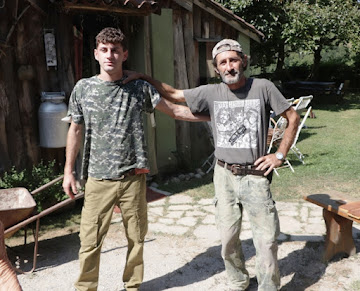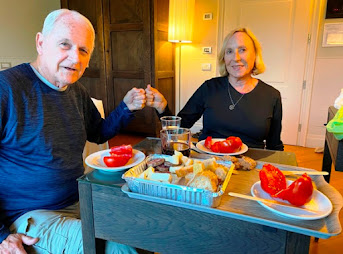When many people think of wine country in Italy,
Tuscany is the first region that comes to mind. So why did we choose to visit
the Piedmont countryside in northern Italy instead?Vineyards in the Piedmont region of northern Italy
The area encompasses the UNESCO protected landscapes
of the Barolo and Barbaresco wine regions, but it also includes rich
agricultural land filled with hazelnut trees and woods hiding prized truffles
in addition to renowned vineyards. Charming hotels, little villages set on
hilltops, excellent restaurants, and fewer visitors than other regions of Italy
made this an ideal destination for a late summer visit.
After hiking in the Dolomite Mountains near the
Austrian border for five days, we spent a few days in Verona, a very historical
and cultural city. Then we traveled by train into the heart of Piedmont wine
and agricultural country. Piedmont is the second largest region in Italy, and
there is a large French influence there. It’s a perfect place to slow down and
relish life’s epicurean pleasures.Courtyard of Villa D'Amelia
Our resort was Villa D’Amelia, an exquisite resort
perched on a hill in the countryside of Benevello. Dinner at Villa D’Amelia was
a delightful event at the featured Michelin restaurant.
The next day we had a full day tour that took us to
three different local producers--a hazelnut farm, a cheese maker who raises his
own sheep, and a winery. We were able to meet small-scale producers and learn
about their everyday life.
Our driver navigated winding mountain roads in the Langhe region, passing more vineyards, to reach the hazelnut farm, home of the Barroero family. A member of the family served as guide through the orchard, telling us that hazelnuts are harvested only after they fall to the ground. Machines vacuum the nuts from the ground, after which the hazelnuts are sorted by size. After the hulls removed they are bagged by size.
We toured the kitchen
area where steaming hazelnut cakes were set on cooling racks. The best part was
tasting a large selection of cookies, butters, cakes, and other products made
with these aromatic nuts.
Returning to the countryside, we again went into the
hills where we met Silvio and his son, local shepherds and cheese producers.
Our visit was very personal as we were taken inside their home, a lovely collection
of vintage furnishing and artwork. A brick oven in the kitchen takes more than
a day to heat up adequately for food preparation, so modern appliances were
used, too.
 |
| We experienced superb hospitality from local shepherds and cheesemakers |
The sheep barn is attached to the house, and various cheeses are
made on premises in a dedicated room. Interesting that there were no inspection
certificates or any indication of government involvement in food preparation or
serving.Cheese tasting deluxe
After touring the premises and learning about their
sheep and cheeses, we were treated to a feast of various cheeses, each with
distinct characteristics because they were aged different lengths of time. All
this was served with fresh-baked bread, the most heavenly tomatoes we had ever
eaten, and plentiful red wine.
Certain grapes grow in specific areas.
Finally, we stopped at the Manzone family winery
where we sampled varietals made in this region. Environmental conditions are
just right for producing famous Barolo wine, the production of which is highly
regulated by the Italian government. A short tour of the wine cellar and
purchase of a bottle of wine concluded our tour.
A second feast with products from our earlier visit.
Back at Villa D’Amelia, we explored the beautiful
property and enjoyed the enclosed patio before gorging once again on products
we had sampled during the day. Flavorful cheeses, fresh, juicy tomatoes, bread
and wine--it was such a lovely experience in a stunning area that we’ll
remember forever.
Photos by Larry and Beverly Burmeier















No comments:
Post a Comment